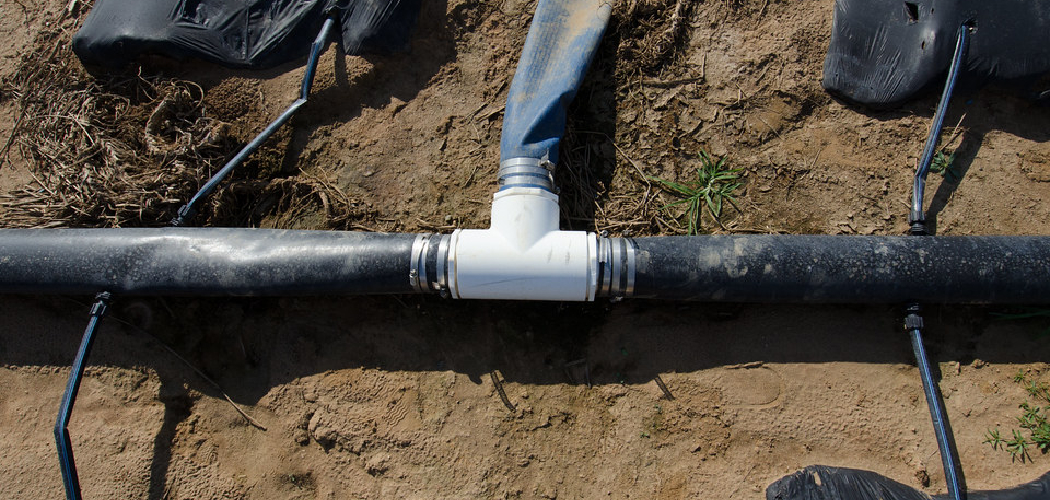If you have a cracked sewer pipe, don’t panic! You can fix it if you have the right tools and know-how to repair cracked sewer pipe. This blog post will show you how to repair a cracked sewer pipe using epoxy adhesive. We’ll also share some tips on how to prevent future cracks from occurring. Keep reading to learn more.
Cracked sewer pipe is a common problem that can be caused by various factors, including tree roots, ground movement, and corrosion. If you have a cracked sewer pipe, it’s important to repair it as soon as possible to prevent sewage from leaking into your home or yard.
Epoxy adhesive is one of the best materials for repairing cracks in sewer pipes because it forms a strong bond and can withstand high temperatures and pressures. Start by cleaning the area around the crack with a wire brush to repair a cracked sewer pipe with epoxy adhesive.
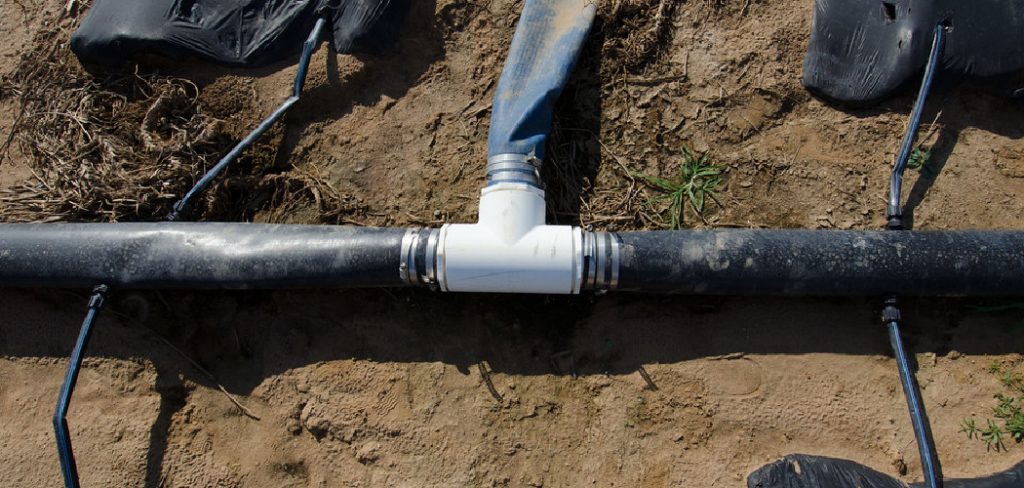
What Is A Sewer Pipe?
A sewer pipe is a pipe that carries wastewater from homes and businesses to a sewer system. A sewer pipe can become cracked for various reasons, including freezing temperatures, ground movement, and tree roots.
Cracks in sewer pipes can allow groundwater and sewage to enter your home or business, leading to serious health hazards. Repairing a cracked sewer pipe is essential to preventing sewage leaks. Sewer pipe repair is a relatively simple process that can be completed in a few hours.
What Causes Cracks In Sewer Pipes?
There are many reasons why sewer pipes may crack. Some of the most common causes include:
- Tree roots growing into the pipe
- Ground movement or shifting
- Poorly installed or damaged pipes
- Age or wear and tear
What Are The Signs Of a Cracked Sewer Pipe?
There are a few signs that you may have a cracked sewer pipe. These include water damage on walls or ceilings, sewage odors in your home or business, and slow drains. You must call a professional for an inspection if you notice any of these signs. Sewer pipes can be repaired with various methods, depending on the severity of the damage.
For small cracks, sewer pipes can be repaired with epoxy adhesive. For larger cracks, the pipe may need to be replaced. Sometimes, it may be possible to use a sleeve to repair the pipe. Consult a professional if you are unsure about how to repair your particular sewer pipe.
You Can Check It Out to Repair Clay Sewer Pipe
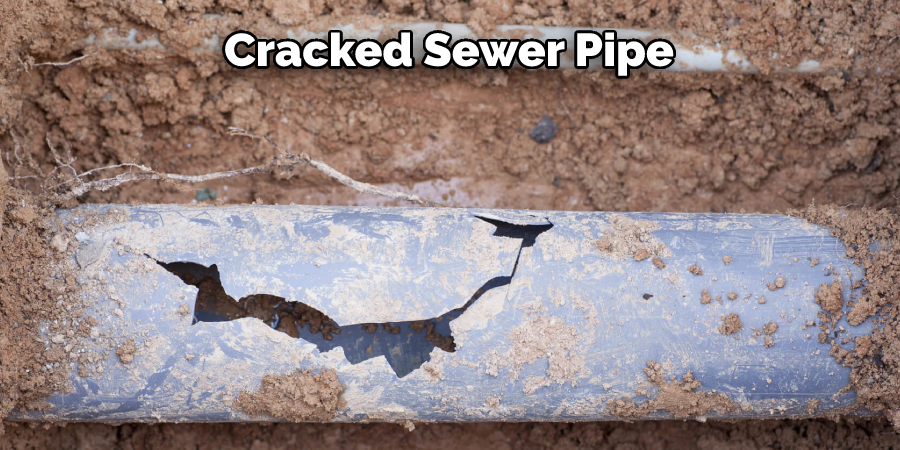
What Supplies You Will Need
- Epoxy adhesive.
- Wire brush.
- Clamps.
- Cleaning supplies.
- Safety gear.
- Protective gloves.
- Respirator.
- Trash bag.
- Caulking gun.
- Measuring cup.
Now that you have all the supplies you need, you’re ready to start repairing the crack in your sewer pipe. Follow the instructions below to get started.
Instructions Guide For How To Repair Cracked Sewer Pipe
1. Cleaning The Area
The first step is to clean the area around the crack. Begin by cleaning the area around the crack with soap and water. Use the wire brush to remove any debris or corrosion that is present. This will help the epoxy adhesive adhere better and prevent dirt and debris from getting into the repair. Use a wire brush to scrub away any loose dirt, grime, or corrosion. If plants grow near the pipe, trim them back so they’re not in the way.
2. Applying The Epoxy Adhesive
Once the area is clean, it’s time to apply the epoxy adhesive. Next, mix the two parts of the epoxy adhesive together in equal proportions. Follow the instructions on the packaging for mixing the adhesive correctly. Follow the instructions on the product label for how to mix and apply the epoxy. Once it’s been mixed, use a putty knife or caulk gun to apply it to the crack. Make sure to fill the crack completely. This is very important because sewage can leak out if the crack is not filled.
3. Clamping The Pipe
After you’ve applied the epoxy adhesive, it’s time to clamp the pipe. This will help to hold the epoxy in place while it dries. Use clamps to secure the pipe on both sides of the crack.
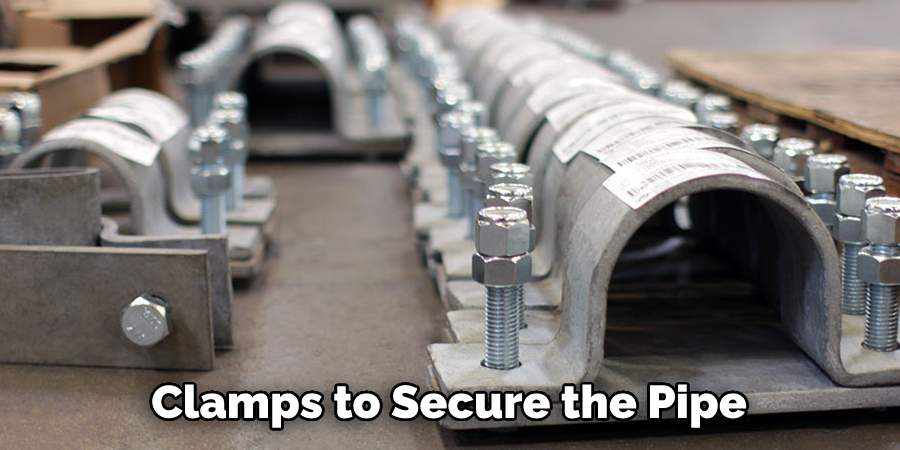
4. Applying The Clamps
After the epoxy has been applied, it’s time to apply the clamps. This will help to hold the epoxy in place while it dries. Place the clamps over the repair and tighten them down until they’re snug. Once the adhesive is mixed, use the caulking gun to apply it to the crack. Use the putty knife to spread the adhesive into the crack. Create holes for the clamps with the drill. Place the clamps over the adhesive and tighten them down with the screwdriver.
5. Letting The Epoxy Dry
Now, all you have to do is let the epoxy dry. Use the hammer to tap the clamps into place if they’re not self-tapping. Allow the adhesive to dry for the amount of time specified on the packaging. This usually takes about 24 hours.
Once the epoxy is dry, remove the clamps and throw them away. Once the adhesive has dried, remove the clamps and dispose of them in the trash bag. Use the wire brush to remove any excess adhesive from the surface of the pipe.
Finally, clean up any remaining adhesive with soap and water. Allow the area to dry completely before using the sewer pipe again.
You’ve now successfully repaired a cracked sewer pipe!
You Can Check It Out to Repair a Leaking Shower Drain
Tips For Preventing Future Cracks
You can do a few things to help prevent future cracks from occurring.
- Make sure that the trees and shrubs around your home are trimmed back so their roots don’t put pressure on the sewer lines.
- Have your sewer lines inspected and cleaned regularly to prevent corrosion and build-up.
- Finally, if you live in an area with a lot of ground movement, consider replacing your sewer lines with PVC pipes, which are more flexible and less likely to crack.
Following these tips can help prevent future cracks in your sewer pipes and keep your home or business safe from sewage leaks. Don’t hesitate to contact a professional if you have a cracked sewer pipe.
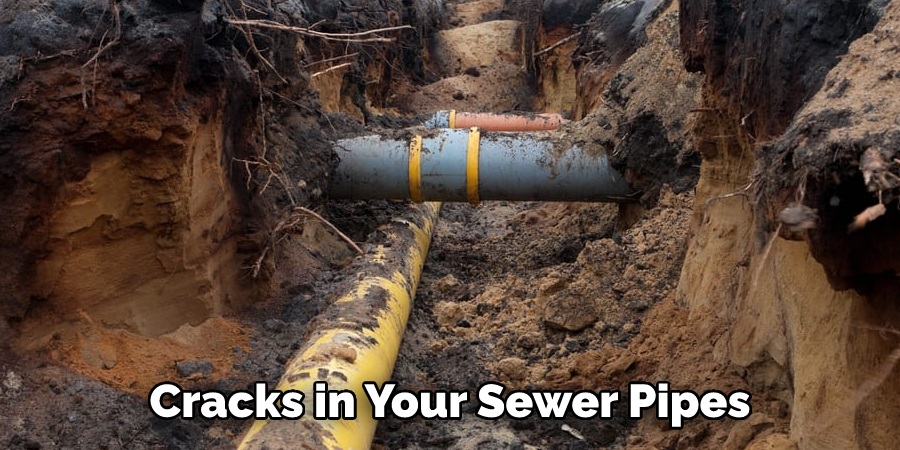
Safety Precaution And Warnings
- Please make sure the area is well-ventilated
- Where a respirator to protect yourself from inhaling fumes.
- Have some rags or paper towels handy to clean up any adhesive that gets on surfaces you don’t want it to.
- Use the correct proportion of mixing the two parts of epoxy adhesive.
- Follow the instructions on the packaging for mixing the adhesive and for drying time.
- Be sure to dispose of any clamps or other materials in the trash bag.
- Failure to do so may result in serious injury or illness.
Is It Possible To Repair A Cracked PVC Pipe?
PVC pipes can be repaired with various methods, depending on the severity of the damage. For small cracks, PVC pipes can be repaired with epoxy adhesive. For larger cracks, the pipe may need to be replaced. Sometimes, it may be possible to use a sleeve to repair the pipe. Consult a professional if you are unsure about the best way to repair your cracked PVC pipe.
What is the Best Way to Repair a Crack in a PVC Pipe?
The best way to repair a crack in a PVC pipe is to use epoxy adhesive. This type of adhesive can be found at most hardware stores. Follow the instructions on the packaging for mixing and applying the adhesive.
Allow the adhesive to dry for the amount of time specified on the packaging. Once the adhesive has dried, remove any clamps or other materials and dispose of them in the trash bag. Finally, use the wire brush to remove any excess adhesive from the surface of the pipe.
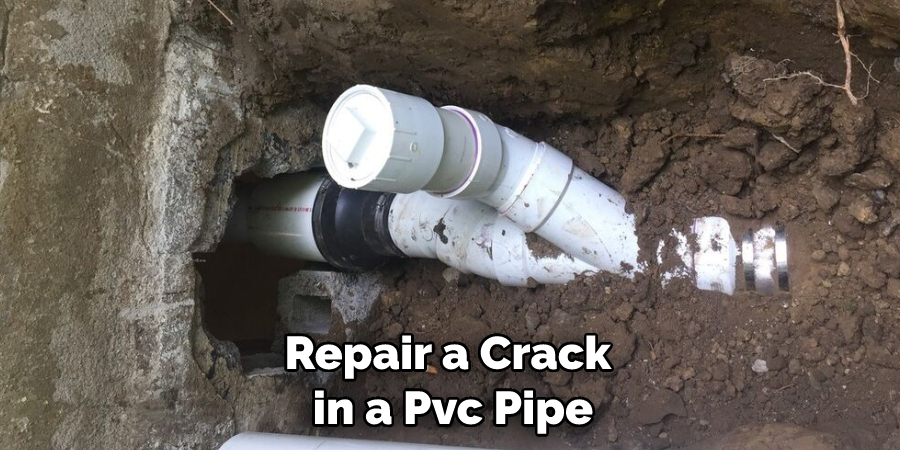
How Serious Can Be A Cracked Pipe?
A cracked pipe can be a serious problem. Cracks in sewer pipes can allow groundwater and sewage to enter your home or business, leading to serious health hazards. Repairing or replacing a cracked sewer pipe as soon as possible is the best way to protect your property and your family.
Conclusion
Cracked sewer pipes can be a major pain, but with the right tools and a little know-how to repair cracked sewer pipe, you can fix them yourself. With these tips in mind, you should be able to repair your cracked sewer pipe quickly and easily.
Cracked sewer pipes can cause many problems. By following these simple steps, you can repair your cracked sewer pipe and get your plumbing back in working order. If you need help repairing your sewer pipe, contact a professional plumber.
You Can Check It Out to Choose the Right Plumbing Pipe

